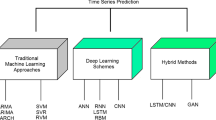Abstract
Cloud workload turning point is either a local peak point which stands for workload pressure or a local valley point which stands for resource waste. The local trend on both sides of it will reverse. Predicting such kind of point is the premise to give warnings to the system managers to take precautious measures. Comparing with the value base workload predication approach, turning point prediction can provide information about the changing trend of future workload i.e. downtrend or uptrend. So more elaborate resource management schemes can be adopted for these rising and falling trends. This paper is the first study of deep learning based server workload turning point prediction in cloud environment. A well-designed deep learning based model named Feature Enhanced multi-task LSTM is introduced. Novel fluctuate features are proposed along with the multi-task and feature enhanced mechanisms. Experiments on the most famous Google cluster trace demonstrate the superiority of our model comparing with five state-of-the-art models.
Access this chapter
Tax calculation will be finalised at checkout
Purchases are for personal use only
Similar content being viewed by others
References
Duggan, M., Shaw, R., Duggan, J., Howley, E., Barrett, E.: A multitime-steps-ahead prediction approach for scheduling live migration in cloud data centers. Softw. Pract. Exp. 49(4), 617–639 (2019). https://doi.org/10.1002/spe.2635
Keogh, E.J., Chu, S., Hart, D.M., Pazzani, M.J.: An online algorithm for segmenting time series. In: Proceedings of the 2001 IEEE International Conference on Data Mining, 29 November–2 December 2001, San Jose, California, USA, pp. 289–296 (2001). https://doi.org/10.1109/ICDM.2001.989531
Luo, L., Chen, X.: Integrating piecewise linear representation and weighted support vector machine for stock trading signal prediction. Appl. Soft Comput. 13(2), 806–816 (2013). https://doi.org/10.1016/j.asoc.2012.10.026
Luo, L., You, S., Xu, Y., Peng, H.: Improving the integration of piece wise linear representation and weighted support vector machine for stock trading signal prediction. Appl. Soft Comput. 56, 199–216 (2017). https://doi.org/10.1016/j.asoc.2017.03.007
Xia, B., Li, T., Zhou, Q., Li, Q., Zhang, H.: An effective classification-based framework for predicting cloud capacity demand in cloud services, p. 1 (2018). https://doi.org/10.1109/TSC.2018.2804916
Acknowledgements
This work is by supported by the National Key R&D Program of China under Grant NO. 2017YFB0202004, the fund of the State Key Laboratory of Software Development Environment under Grant No. SKLSDE-2017ZX-10, and the National Science Foundation of China under Grant No. 61772053 and No. 61572377. Guangzhou Science and Technology Projects (Grant Nos. 201807010052 and 201610010092).
Author information
Authors and Affiliations
Corresponding author
Editor information
Editors and Affiliations
Rights and permissions
Copyright information
© 2020 Springer Nature Switzerland AG
About this paper
Cite this paper
Ruan, L., Bai, Y., Xiao, L. (2020). Cloud Server Load Turning Point Prediction Based on Feature Enhanced Multi-task LSTM. In: Wen, S., Zomaya, A., Yang, L.T. (eds) Algorithms and Architectures for Parallel Processing. ICA3PP 2019. Lecture Notes in Computer Science(), vol 11945. Springer, Cham. https://doi.org/10.1007/978-3-030-38961-1_22
Download citation
DOI: https://doi.org/10.1007/978-3-030-38961-1_22
Published:
Publisher Name: Springer, Cham
Print ISBN: 978-3-030-38960-4
Online ISBN: 978-3-030-38961-1
eBook Packages: Computer ScienceComputer Science (R0)




